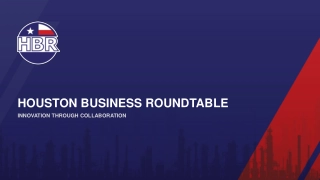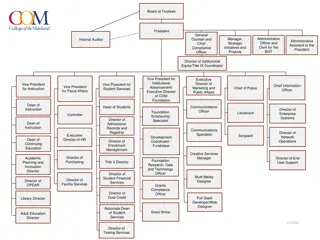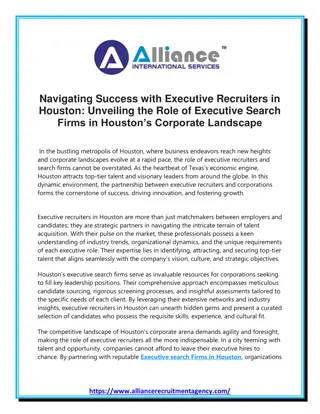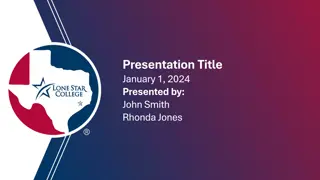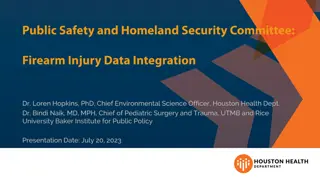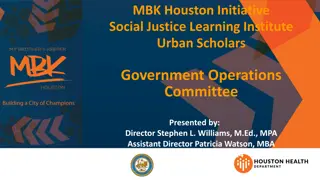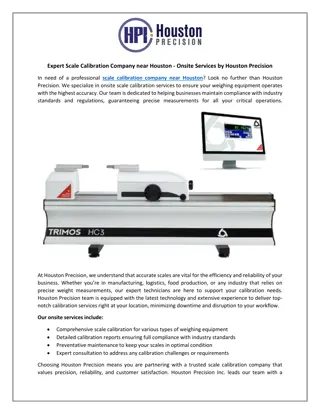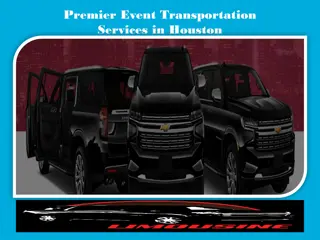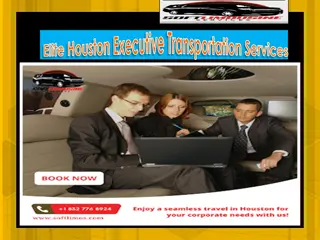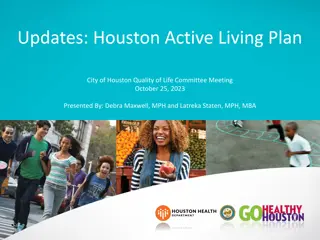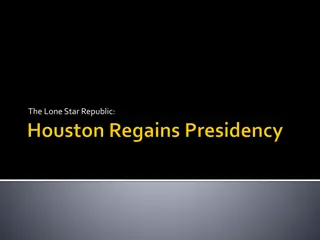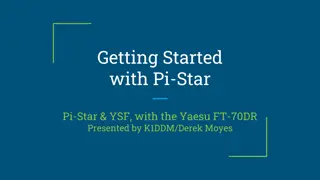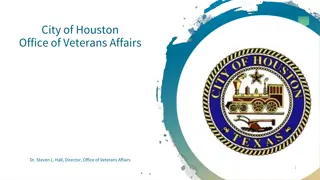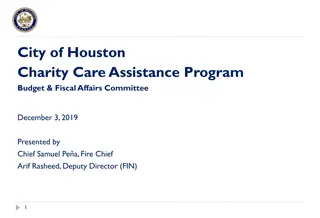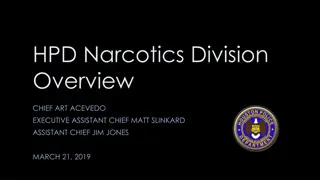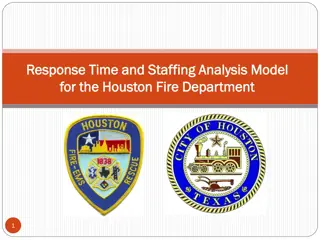Lone Star College: Houston's Leading Higher Education Institution
Lone Star College, the largest institution in Houston, is a rapidly growing community college with an annual economic impact of nearly $3 billion. With 99,000 students choosing Lone Star College, it offers a more affordable pathway to earning a bachelor's degree. This presentation showcases the college's achievements and highlights its significant role in the education sector.
Download Presentation

Please find below an Image/Link to download the presentation.
The content on the website is provided AS IS for your information and personal use only. It may not be sold, licensed, or shared on other websites without obtaining consent from the author.If you encounter any issues during the download, it is possible that the publisher has removed the file from their server.
You are allowed to download the files provided on this website for personal or commercial use, subject to the condition that they are used lawfully. All files are the property of their respective owners.
The content on the website is provided AS IS for your information and personal use only. It may not be sold, licensed, or shared on other websites without obtaining consent from the author.
E N D
Presentation Transcript
1 Training to Train, Adult Learning CAHAM 49th Annual Conference and Exhibition
2 Agenda Introduction Module 1: Adult Learning Module 2: Training Tools Module 3: Training Approach Module 4: Assessments & Reaction Forms
3 Module 1: Adult Learning How do Adults Learn Learning to Listen How do we Remember Topic Delivery
4 How do YOUlearn Quiz
5 QUESTION 1 If you saw the word dog written down, how would you react? a) Imagine a dog in your mind b) Say the word dog out loud to yourself c) Imagine things related to a dog (barking, playing fetch)
6 QUESTION 2 You are playing a computer game and you want to figure out how to do something. What would you do? a) Watch a video on the internet on how it is done b) Ask someone to explain it to you c) Figure it out by yourself by attempting to do it
7 QUESTION 3 Which of the following would you most likely do for fun? a) Watch a movie b) Listen to music c) Some kind of physical activity
8 QUESTION 4 Which way do you prefer to study? a) Looking at a diagram b) Listening to an instructional video c) Writing notes on a piece of paper and sticking them on the walls in your room
9 QUESTION 5 You just arrived to a city that is unfamiliar to you. How would you find a local supermarket? a) Find and follow a map b) Ask someone for directions c) Keep walking around figuring it out for yourself, using landmarks to remember where you are
10 How did you do? Count how many questions you answered A , B , and C If you answered mostly A , you are a visual learner If you answered mostly B , you are an auditory learner If you answered mostly C , you are a hands-on learner
11 Adult Learning Learning styles Visual learners tend to: Sit in front of the class Look at the instructor s body language and facial expressions Learn best from visual displays (diagrams, videos, manuals) Auditory learners tend to: Learn best from lectures and discussion type training Listen to the tone of your voice to interpret importance/relevance Benefit from reading the information out loud Hands-on learners tend to: Learn best from practice demonstrations Benefit from role playing Use activities and simulations
12 Adults learn best when: They understand the why it is important for them to learn or do They are allowed to learn in their own style They are allowed to experience what they are learning The time is right for them to learn They are encouraged to learn
13 Training your staff Consider the different types of employees and the best training approach for each: Employee Type Tenured System Savvy Star New Hire Non-Committed Training Approach Visual Auditory Hands-on Let s explore
14 Tenured Employee 1: Knowledgeable (Right or Wrong?) 2: May find it difficult to adapt to change 3: May not be technology savvy 4: May go with the flow
15 Oppose Change that s not how we do it that s not going to work system is too complicated this won t last, I have been through dozens of these changes! I don t get this
16 Why? Fears Job loss Not technology savvy Not test takers Poor retention Added job duties Nervous about being observed Loss of past expertise and being the go to person
17 Best Training Approach Visual and Auditory Seeing, watching, listening, speaking Explain the reason for the change Use their knowledge and encourage discussions Identify the ultimate goal and provide visual roadmap Share the benefits of the new concept/idea/change Recognize the hurdles before reaching the goal
18 Involvement is important for the Tenured employee Involve employee in planning and implementation sessions System conversions Ask for their input Show the benefits of the new system Process changes Present the new process and ask for feedback Challenges Wins
19 System Savvy Employee 1: Thinks they already know the application before you show it to them 2: Is anxious to learn something new 3: Is able to succeed quickly in the training
20 Caution Some caution to consider with the system savvy employee: May get bored easily Have the I already know this attitude May seem uninterested How do we engage them?
21 Best Training Approach - Hands-On Involve, Involve, Involve Practice and hands-on exercises Challenge them to break the application and/or system Listen for their ideas, questions, and suggestions Identify if they can assist with training
22 Why? System Savvy employees can be your biggest rock star! They can assist with the development phase They can help create a positive attitude on the new application with their co-workers They can assist with training
23 Star Employee 1: Knowledgeable 2: Eager to embrace change 3: Quick learner 4: Keeps positive morale in the group
24 Considerations Star employee may: Not be ready for change Not be as knowledgeable as you think Not be technologically savvy Ability to influence others
25 Best Training Approach Visual and Hands-On Need to see and do Make it relatable Use their strengths Show examples to keep them engaged Involve them in the planning and implementing sessions Let them be your cheerleaders
26 New Hire Employee 1: No knowledge 2: Limited/Some knowledge 3: Easily motivated 4: Wants to do a good job
27 Best Training Approach Visual, Hands-On, and Auditory Need to see, listen, and do Explain in detail, make no assumption Make it relatable Use their past knowledge to introduce new concept Use visual aids Provide examples and allow for hands-on exercises Role-Play
28 Non-Committed Employee 1: just a job employee 2: Part-time job 3: PRN 4: Seasonal job 5: Trying something new
29 Comments this is just my part-time job I just need to finish school I only need to work XX hours to pay rent/school/debt too much for me I can do this!
30 Best Training Approach Visual and Hands-On Need to see and do Provide visual aides to explain the importance and impact of the training Set clear goals of what the training is expected to achieve Have practice and observation exercises Assess knowledge and retention
31 Learning to Listen We listen to obtain information We listen to understand We listen for enjoyment We listen to learn
32 We Remember 10% of what we read 20% of what we hear 30% of what we see 50% of what we see and hear 70% of what we discuss with others 80 % of what we personally experience 95% of what we teach others
33 Topic Delivery Relatable Training topic must be of importance Meaningful Training must define impact on job Understandable Training must be delivered in a clear and concise manner Enjoyable Training should be fun!
34 When everything fails Identify root cause: Is it a particular concept? Is it the delivery? (visual, audio, hands-on) Is it the implementation? Is it retention? Is it a test taking issue? Is it not the right fit?
35 Summary There are 3 types of learning styles: visual, auditory, hands-on Identify which learning style is best suited for your employee Adults listen to learn Adults remember most from repetition When training, remember that the topic must be relatable, meaningful, understandable, and enjoyable!
36 Module 2: Training Tools PowerPoint Presentation(s) Training Manuals Handouts Job Aides E-Learning
37 PowerPoint Presentations Rules to consider: Do s Don ts Use key phrases Avoid paragraphs Use relatable images Avoid cartoons Use no more than 2 fonts Avoid multiple fonts and colors Select appropriate slide design Avoid clutter Show emphasis on specific fact(s) Avoid detailed reports
38 Sample OCGI POS PowerPoint Training
39 Training Manuals Reference guide Detailed information by topic Easily accessible Online Physical copy Enforces consistency
40 Sample OCGI Back to Basics Training Manual
41 Sample OCGI POS Training Manual
42 Handouts Offers detailed information on specific task, project, process, etc. Easy to read and review Summary of key points Used in combination with PowerPoint presentations
43 Job-Aids Reference tool Provide updated information Helps employee retain information Reinforces consistency
44 Sample OCGI POS Job Aid
45 E-Learning Accessibility Learning at your own pace Interactive format Cost effective
46 Summary PowerPoint presentations should be used as talking points Training manuals offer consistency Hand-outs and Job Aides offer quick training tips E-Learning may allow for a more convenient and cost effective training approach
47 Module 3: Training Approach Identify training need Select venue Choose resource Setting up the classroom
48 Identify the training need Individual learning Group learning Department learning Management learning
49 Examples Individual learning Group learning Department learning Management learning Specific employee Specific area Learning applies to all Leadership training Example Individual employee with continued registration errors Example Pre-registration incoming queue times Example Patient check-in procedures Example Hiring/Interviewing techniques Insurance verification days out POS collection goal New/Updated Policies and Procedures review Supporting New hire
50 Select venue One-on-one Monthly meeting On the job training Set curriculum E-learning Web-based learning


